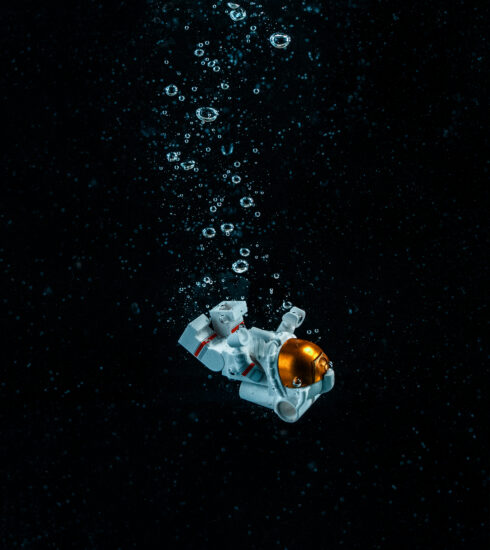Jennie De Groot
-
Ruby Tocker

- September 14, 2025
Jennie De Groot is a conceptual painter who was born in England and educated in South Africa. She paints vivid, intentional landscapes that bridge the gap between imagination and reality, creating something that is foreign but familiar. Recently, Jennie has introduced urban and figurative forms into her work, allowing her to find new meaning behind the brush strokes.
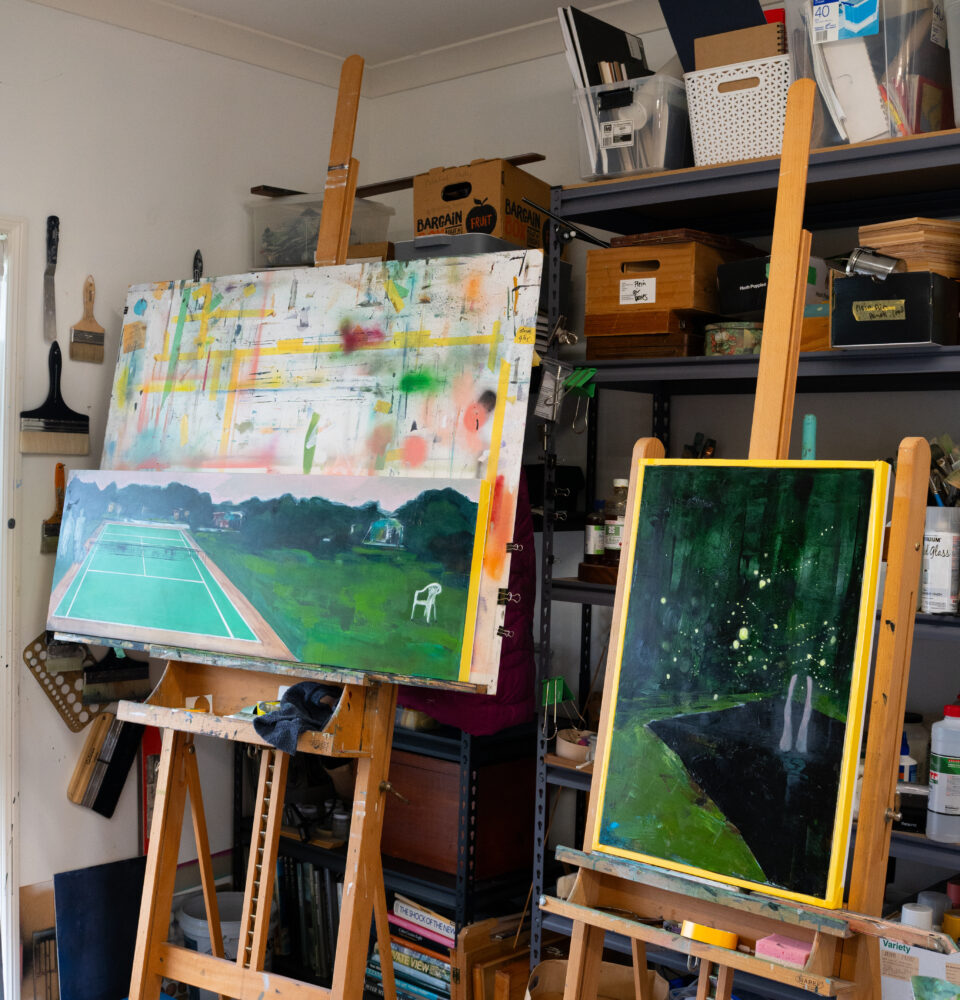
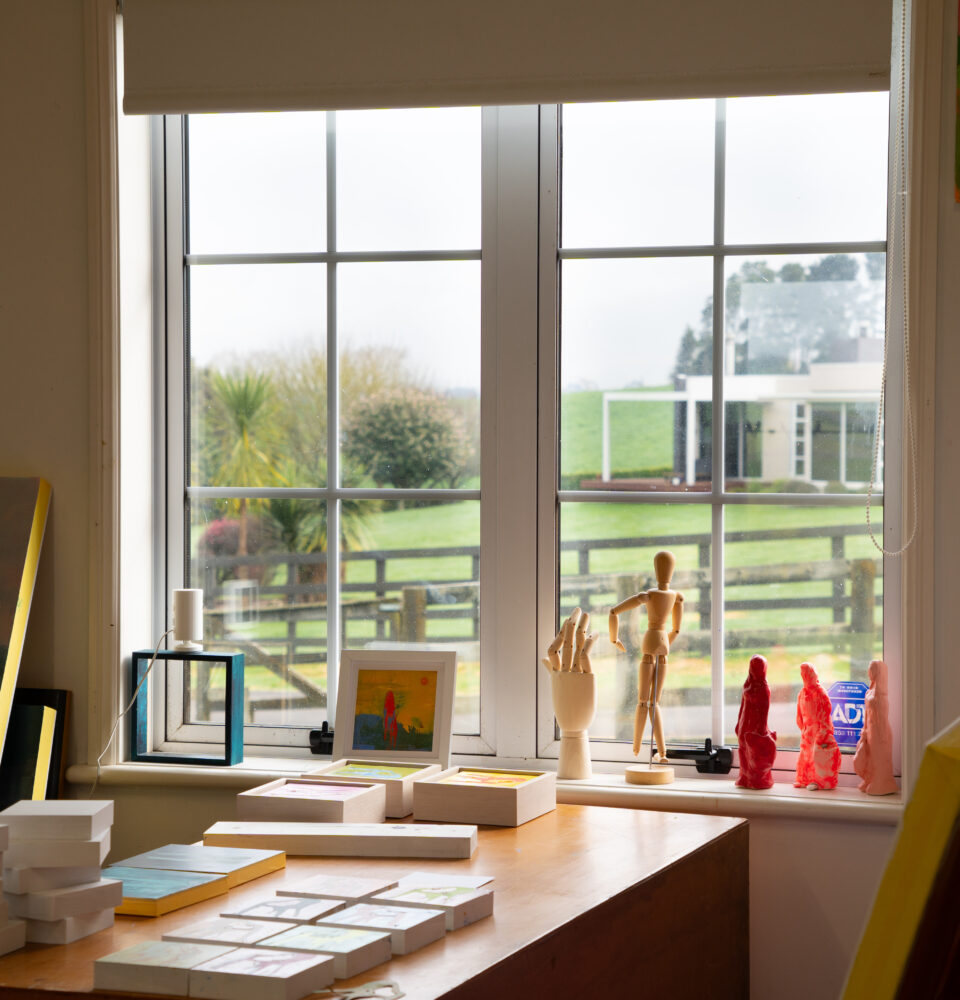
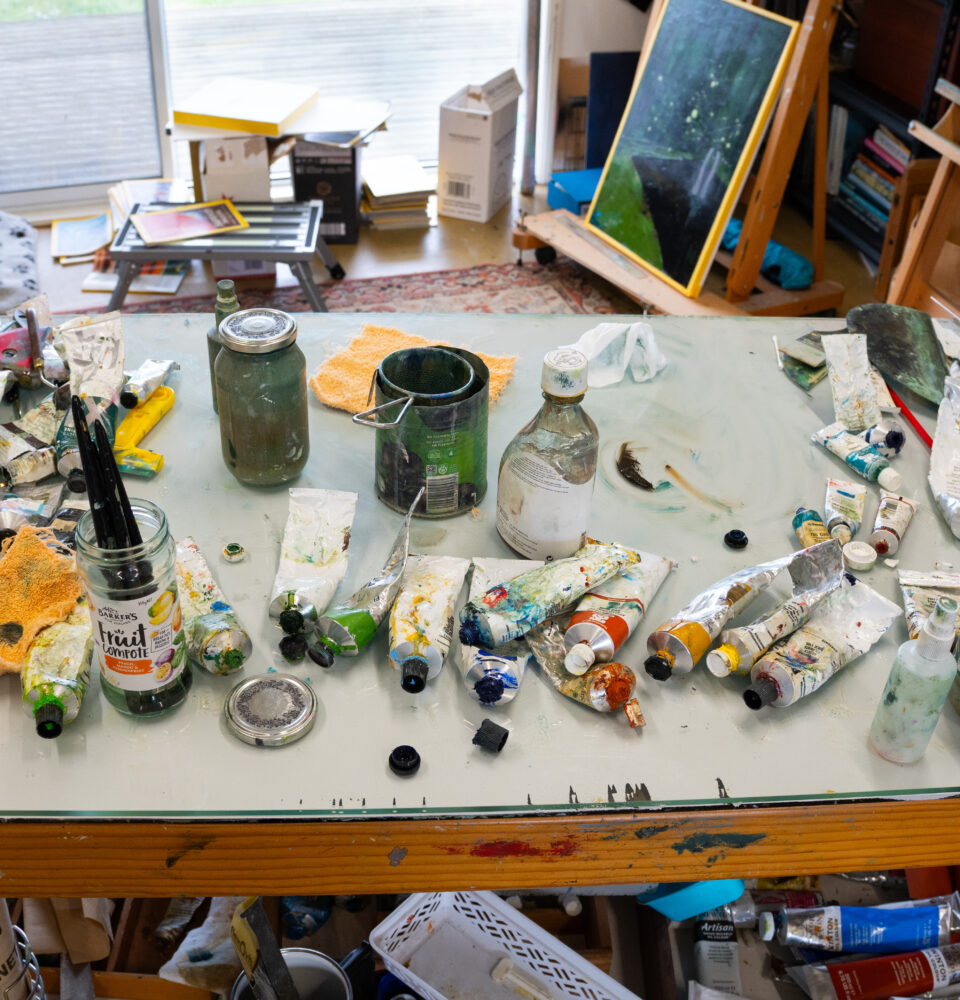
What’s your name? What’s your medium? And how long have you been working as an artist?
My name is Jennie De Groot. My medium is oil paint, and I have been painting for about 17 years.
Can you pinpoint the moment/period of time you realised you wanted to become an artist?
I had always wanted to be an artist. My dad is an architect, so I grew up with him as an exceptional technical drawer. I am not a technical drawer, so I was quite turned off. And my parents were very much focussed on me going into STEM. So, it was science and biology, I took no art. But whenever I was working I always did an evening class and it was always there. But it was only in my 40s, when I got really unwell and I almost died, that I was clarified for me. I needed to lead a creative life. And painting has always been my go to medium. I’m interested in the 2D, yeah.
How did you break into the industry?
Well, first of all, I had to get my technical skills up, and I wasn’t in a position to go to an art school. So, I am self taught in that manner, but I think all artists are self taught. I utilised YouTube videos, online availability, library books, and then I just made. I made lots and lots of really bad paintings. I made a lot of them because I am a believer in it’s the quantity of the work that you make that gets you to that. You have to do a lot of really bad stuff before you can get to the good stuff, and you’ve got to be really comfortable with that idea of what you want to create and what you’re creating, not matching, and then working out how are you going to get this?
Describe your artistic process.
I consider myself a conceptual artist. I’m always painting by an idea—I paint in order to work out what I’m thinking. So, all of my process is problem solving. It’s as simple as that. Thinking about the issue that I’m thinking about and problem solving. And somehow those two resolve into a 2D image at some stage.
Do you have any tertiary qualifications? If so, what are they?
Yes, I have an undergraduate in Archeology and a Masters degree in Visual Art.
And have they been beneficial to your career as an artist?
It was very beneficial because it clarified my thinking, and how to expand ideas around narrative, and being able to articulate in relation to contemporary issues, situations that I wanted to explain, in my work. There is also the other side to that. It is that if you do have formal education, you are streamlined into an arts culture in New Zealand that already has been set up with dealer galleries and then various galleries that go down. If you are wanting a fine arts career in the dealer gallery, it’s almost exclusively accessible through tertiary education. They’re not really interested in anybody who doesn’t have that background thinking about the work and making it relevant to contemporary ideas. I mean that’s changing, but that was the traditional force, yeah.
Art can be very personal. Did you find putting your work out challenging? If so, how did you combat that?
The challenging part is always criticism. But that has nothing to do with me. I have made the work, your opinion has nothing to do with me. So, I’ve managed to sort of separate myself from that. I also know the work is good—I have self belief. It might not have the audience at the moment for what it needs, doesn’t matter, I still need to make the work. And it’s about the self. I have a desire, I have a need to make the work. So, external influences don’t really come into it for me.
What have you found to be the most effective way of marketing your work?
I think… personal relationships. I know that sounds really strange. But in these days of social media and everything’s a distance, I feel personal relationships are how my work is getting out there. Meeting people, meeting gallerists, meeting people who buy the work, responding to things that people say online, etc. Creating myself as a personality, and then maintaining those relationships.
How did your business model adapt with the rise of social media?
Interestingly, I haven’t changed anything for social media, because I don’t get my revenues through it. It’s far more a community for me than it is a revenue stream. I have just continued expanding. I also don’t have all the social medias; I have three of them that I utilise. Too much for me. And too much for everybody, you know? It’s a bit over the top. So, nothing really changed there for me with social media. But I still utilise it. And without it, I wouldn’t have that community.
Name one thing social media has added and one thing it’s taken away from the industry.
It’s added community, and I think it’s taken away a lot of mystery about what artists do.
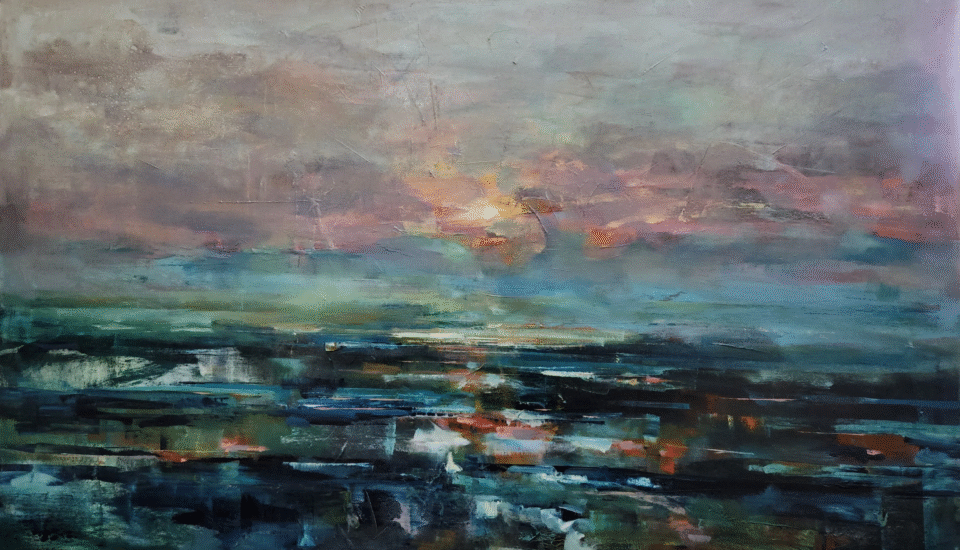

How do you value/price your artwork? I have a spreadsheet for every single piece.
That is such a difficult question, and one that I used to avoid for quite a while. But I know, personally, that if I spend a lot of money on something I value it. If I buy a nice dress and it costs a couple hundred bucks, I look after it, I love it, and I cherish it. So, by undervaluing my paintings by going, oh, you know, you can have it, or it’s something. It’s not a good idea. And then when I was in galleries, I relied on their pricing and just went from there.
Have you ever thought about quitting? If so, how did you escape that mindset?
When I think about quitting I know I need to have a break. I need to go and do something else. I could never not do something creative because my life before this was always trying to fit being creative and making stuff in around things that I had to do, you know, my work, whatever, I know when I’m getting tired and frustrated, I need a break. I need a holiday. I need to recharge. So, that’s what I know, I just need to detach for a while and come back. So, I travel, go on holiday.
What is one piece of advice you’d give to aspiring artists?
Make lots of work. Just make lots of work, you get better. Technical skills improve, and then your mental stuff, and it all just spirals. So, make lots of work.
Where can our readers find you and your art?
Oh, definitely online. I’m on Instagram, Facebook, I even have a TikTok channel to chat about what it is to be an artist. Ramblings. And through my galleries, Black Door, Gallery Denovo, Muse Art Gallery, and my website.
And finally, what’s your favourite form of potato?
That’s a hard one. I actually like a baked potato—a really solid baked potato. Crispy on the outside. Soft on the inside. It’s my go to. It’s my Irish heritage.
About Author / Ruby Tocker
5’1”, 125 pounds, and fresh out of a seasonal depression. Known for her `fery gameplay and strategy: she has been compared to the likes of Michael Jordan and Tom Brady. Ruby can be found
